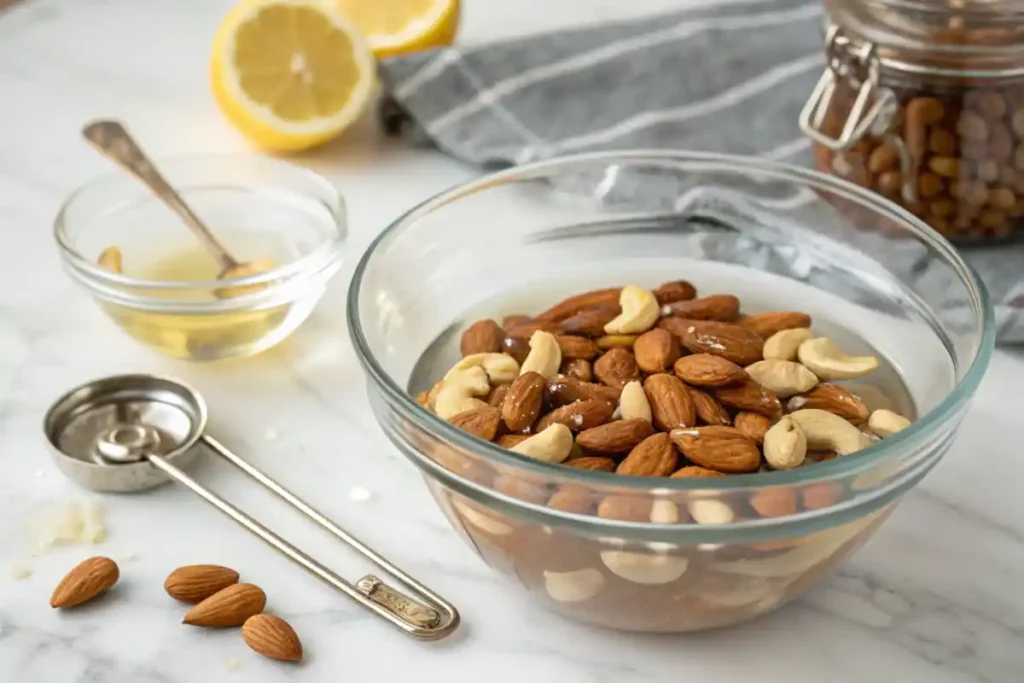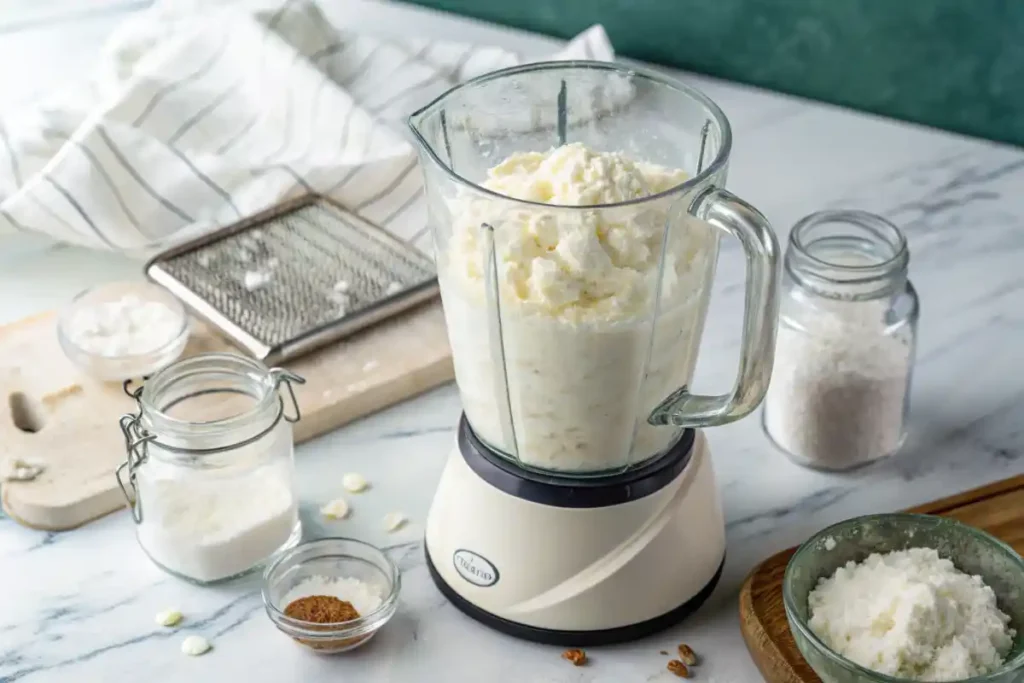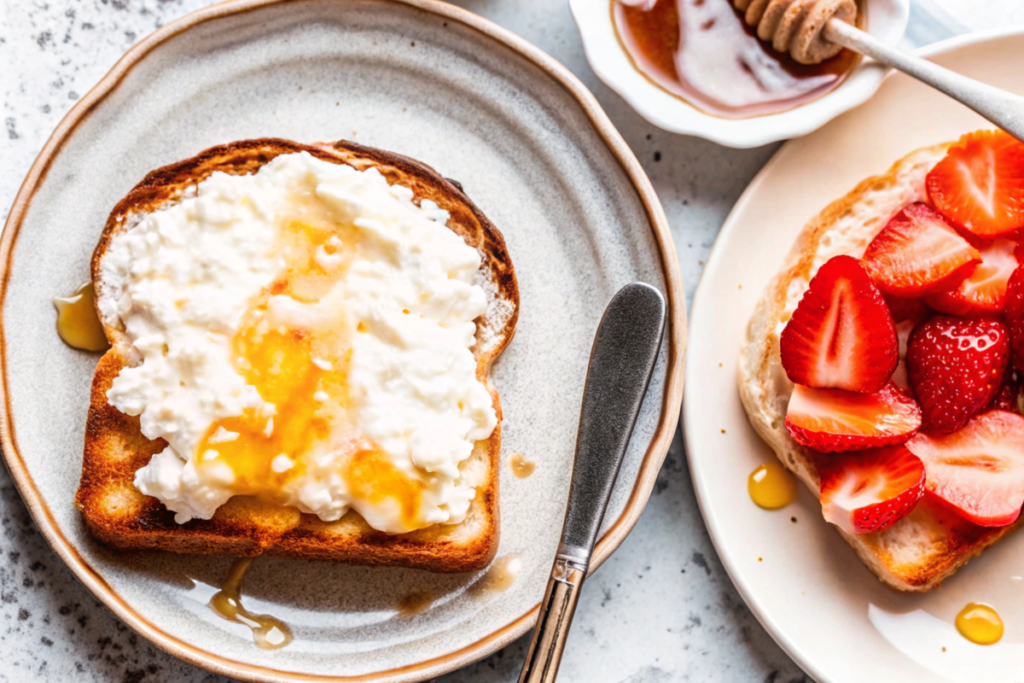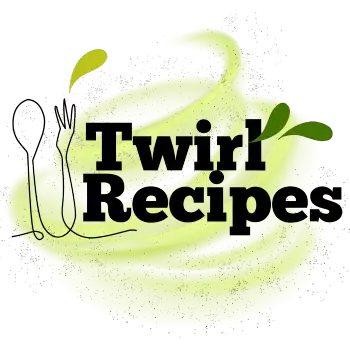Are you ready to explore a creamy, protein-packed delight that’s perfect for a dairy-free diet? Dairy-free cottage cheese is a game-changer for anyone seeking a healthier, lactose-free, or plant-based alternative to the traditional kind. In this guide, we’ll take you on a flavorful journey through the benefits, recipes, and tips for making your own. So grab a spoon, and let’s dive into this exciting world of plant-based cheese goodness!
JUMP TO
Why Choose Dairy-Free Cottage Cheese?
What Is Dairy-Free Cottage Cheese?
This plant-based alternative to traditional cottage cheese. Instead of dairy, it’s made from ingredients like almonds, cashews, tofu, or even coconut milk. But don’t let that fool you—this non-dairy delight still boasts a creamy texture and slightly tangy taste, making it a versatile addition to your recipes. Whether you’re lactose-intolerant, vegan, or just exploring healthier food options, this version of cottage cheese is a must-try!
Benefits of Dairy-Free Cottage Cheese
Lactose-Free Goodness
Say goodbye to tummy troubles! Dairy-free cottage cheese is a blessing for those who can’t digest lactose. It’s gentle on your digestive system while offering a delightful creamy flavor. No more missing out on cheesy treats!
Vegan-Friendly Option
Calling all plant-based eaters—this one’s for you! Whether you’re a seasoned vegan or just dipping your toes into plant-based eating, this cheese alternative is a satisfying way to add variety to your diet.
Nutritional Benefits
Don’t underestimate its nutrition! Packed with plant-based protein, dairy-free cottage cheese can be a fantastic addition to your meals. Depending on the base ingredient (like cashews or tofu), it may also provide healthy fats, vitamins, and minerals.
Ingredients and Variations

Creating dairy-free cottage cheese at home is simple, and the ingredients are easy to find. Here’s what you’ll need for a basic recipe, along with optional add-ins to customize the flavor and texture:
- Base Ingredient (Choose One):
- 1 cup of soaked almonds (soak for 6-8 hours, then peel)
- 1 cup of soaked cashews (soak for 4-6 hours for a creamy texture)
- 1 block (14 ounces) of firm or silken tofu, depending on your desired consistency
- 1 cup of full-fat coconut milk for a slightly sweet and creamy result
- Acid for Tanginess:
- 2 tablespoons of lemon juice (freshly squeezed works best)
- 1 tablespoon of apple cider vinegar to mimic the tang of traditional cottage cheese
- Salt for Flavor:
- ½ teaspoon of sea salt or Himalayan salt, adjusted to taste
- Optional Nutritional Boosters:
- 1-2 tablespoons of nutritional yeast for a cheesy, umami flavor
- 1 teaspoon of garlic powder or onion powder for a savory twist
- Optional Thickeners (If Needed):
- 1 teaspoon of tapioca starch or arrowroot powder for a firmer texture
- Water or Plant-Based Milk (as needed):
- ¼ to ½ cup of unsweetened almond milk or filtered water to blend smoothly
- Optional Garnishes and Mix-ins:
- Fresh or dried herbs (e.g., dill, parsley, or chives)
- A pinch of black pepper or paprika for extra flavor
With this detailed list, you can easily tailor your dairy-free cottage cheese to suit your preferences, whether you prefer it tangy, savory, or slightly sweet. This foundation also pairs beautifully with dishes like Cottage Cheese Flatbread for a delightful, health-conscious meal.
How to Make Dairy-Free Cottage Cheese at Home
Making dairy-free cottage cheese at home is easier than you might think! Follow these detailed steps to create a creamy, tangy, and versatile cheese alternative that suits your taste buds and dietary needs.

- Prepare Your Base:
- If using nuts like almonds or cashews, soak them in water for the recommended time (6-8 hours for almonds, 4-6 hours for cashews). Drain and rinse thoroughly. For almonds, remove the skins for a smoother texture.
- If using tofu, drain and pat it dry.
- For coconut milk, simply shake the can to mix the cream and liquid.
- Blend the Base:
- Add your chosen base (nuts, tofu, or coconut milk) to a high-speed blender or food processor.
- Start with ¼ cup of unsweetened almond milk or filtered water to help with blending. Add more as needed to achieve the desired consistency.
- Add Tanginess:
- Mix in 2 tablespoons of lemon juice and 1 tablespoon of apple cider vinegar. Blend again to incorporate.
- Season the Mix:
- Add ½ teaspoon of sea salt or adjust to taste. For a savory twist, sprinkle in 1 teaspoon of garlic powder or onion powder.
- Optional Boosters:
- If you’re craving a cheesy flavor, add 1-2 tablespoons of nutritional yeast. Blend well to ensure even distribution.
- Adjust the Texture:
- If the mixture is too thick, add small amounts of water or plant-based milk until you reach the consistency of traditional cottage cheese. For a firmer texture, stir in 1 teaspoon of tapioca starch or arrowroot powder, and pulse briefly.
- Final Touches:
- For a fresh, herby finish, fold in chopped herbs like dill, parsley, or chives. A pinch of black pepper or paprika adds a nice flavor pop.
- Chill Before Serving:
- Transfer the mixture to an airtight container and refrigerate for at least 1 hour. This allows
Delicious Ways to Use Dairy-Free Cottage Cheese
Breakfast Ideas
- Savory Veggie Bowl: Combine it with avocado, cherry tomatoes, and a sprinkle of chives for a protein-packed breakfast bowl. Pair this with our Sourdough Breakfast Recipes for a complete morning meal.
- Creamy Toast Topping: Spread your dairy-free cottage cheese over whole-grain toast and top with fresh fruits like berries, sliced bananas, or a drizzle of agave syrup for a naturally sweet breakfast.

Lunch and Dinner Recipes
- Pasta Topping: Toss it into warm pasta dishes, such as our Cajun Shrimp Pasta, for a creamy, tangy twist without dairy.
- Protein-Packed Salads: Add dollops of dairy-free cottage cheese to mixed greens, roasted vegetables, or a quinoa salad for a creamy texture and a protein boost.
- Stuffed Peppers: Use it as a filling for bell peppers, mixed with herbs, garlic, and cooked grains like rice or farro. Bake until tender for a healthy and satisfying dish.
Desserts and Snacks
- Cottage Cheese Cookie Dough: Check out our Cottage Cheese Cookie Dough recipe for a deliciously indulgent treat made dairy-free.
- Cheesecake Base: Transform it into a dairy-free cheesecake filling by blending it with sweeteners and coconut cream.
- Fruit Dip: Mix it with a splash of vanilla extract and a touch of maple syrup to create a dip for apple slices, strawberries, or other fruits.
The possibilities are endless, and the best part? Each dish benefits from the creamy, tangy goodness of dairy-free cottage cheese.
Storage and Freezing Tips
How to Store Dairy-Free Cottage Cheese
Proper storage is key to keeping your dairy-free cottage cheese fresh and delicious. Follow these tips to ensure its quality and extend its shelf life:
- Use an Airtight Container:
Transfer your dairy-free cottage cheese to an airtight container immediately after preparing it. This helps prevent it from absorbing other odors in the fridge. - Refrigerate Promptly:
Store it in the refrigerator at a temperature below 40°F (4°C). It’s best to consume it within 5-7 days to enjoy the freshest taste and texture. - Stir Before Use:
If the mixture separates slightly during storage, give it a good stir before serving to restore its creamy consistency.
Can You Freeze Dairy-Free Cottage Cheese?
Freezing dairy-free cottage cheese is possible, but it requires some care to maintain its quality. Here’s how to do it:
- Divide into Portions:
If you don’t plan to use all your cottage cheese at once, divide it into smaller portions before freezing. This makes it easier to thaw only what you need. - Use a Freezer-Safe Container:
Place the portions into freezer-safe, airtight containers or heavy-duty freezer bags. Make sure to leave a little space for expansion as it freezes. - Label and Date:
Add a label with the preparation date to keep track of its freshness. Dairy-free cottage cheese can be stored in the freezer for up to 2 months. - Thaw Gently:
When you’re ready to use it, thaw the cottage cheese in the refrigerator overnight. Avoid microwaving or quick-thaw methods, as they can affect the texture. - Blend if Necessary:
After thawing, the texture might become slightly grainy. A quick pulse in the blender can help restore its creaminess.
Health Considerations
Is Dairy-Free Cottage Cheese Healthy?
Absolutely! Dairy-free cottage cheese offers a variety of health benefits, making it an excellent alternative to traditional dairy products. Here’s why it’s a great choice:
- Rich in Plant-Based Protein: Depending on the base ingredient, such as tofu or cashews, this alternative can pack a solid protein punch, supporting muscle growth and repair.
- Low in Saturated Fats: Unlike dairy-based versions, many dairy-free options are lower in saturated fats, contributing to heart health.
- Packed with Nutrients: Almonds, cashews, and tofu are loaded with essential nutrients like magnesium, calcium, and iron, making this alternative a nutritional powerhouse.
- Digestive-Friendly: Being lactose-free, it’s gentle on the stomach and perfect for those with lactose intolerance.
Allergens to Watch Out For
While dairy-free cottage cheese eliminates dairy allergens, some ingredients might still cause sensitivity. Be mindful of the following:
- Nut Allergies: If using almonds or cashews, this option may not be suitable for those with nut allergies. Opt for tofu-based versions instead.
- Soy Sensitivity: For soy-free diets, avoid tofu-based cottage cheese and explore nut or coconut milk options.
- Cross-Contamination Risks: If you have severe allergies, always check for cross-contamination warnings on store-bought products.
Conclusion
Dairy-free cottage cheese is a fantastic alternative for anyone looking to enjoy the creamy texture and tangy flavor of traditional cottage cheese without the dairy. It’s packed with plant-based goodness, simple to make at home, and works beautifully in a variety of recipes, from savory dishes to sweet treats.
With its versatility and health benefits, dairy-free cottage cheese is sure to become a staple in your kitchen. So why not get started today? Experiment with different base ingredients, flavors, and textures to find your perfect combination. Enjoy the journey to healthier, tastier meals!
FAQs About Dairy-Free Cottage Cheese
Does Cottage Cheese Come in Dairy-Free?
Yes, this non-dairy alternative is becoming increasingly popular! Crafted from ingredients such as almonds, cashews, tofu, or coconut milk, it offers a creamy texture and tangy flavor reminiscent of the traditional version. It’s a fantastic option for vegans, those with lactose intolerance, or anyone exploring a plant-based lifestyle.
What Is a Good Substitute for Cottage Cheese?
If you’re avoiding dairy, great substitutes include:
– Dairy-free cottage cheese (store-bought or homemade).
– Silken tofu, which offers a similar texture and mild flavor.
– Cashew cream or almond ricotta, both creamy and versatile alternatives.
For traditional diets, options like Greek yogurt or ricotta can also work.
What Is the Best Cottage Cheese for Lactose Intolerance?
For those with lactose intolerance, lactose-free cottage cheese is available in many grocery stores. Alternatively, plant-based options like almond-based dairy-free cottage cheese or tofu-based versions are excellent choices, offering both creaminess and tang without the lactose.
How Much Dairy Is in Cottage Cheese?
Traditional cottage cheese is made from dairy and contains lactose, a natural sugar found in milk. However, dairy-free cottage cheese contains absolutely no dairy, making it a perfect alternative for anyone avoiding milk products.
Latest Recipes to Inspire Your Next Meal






